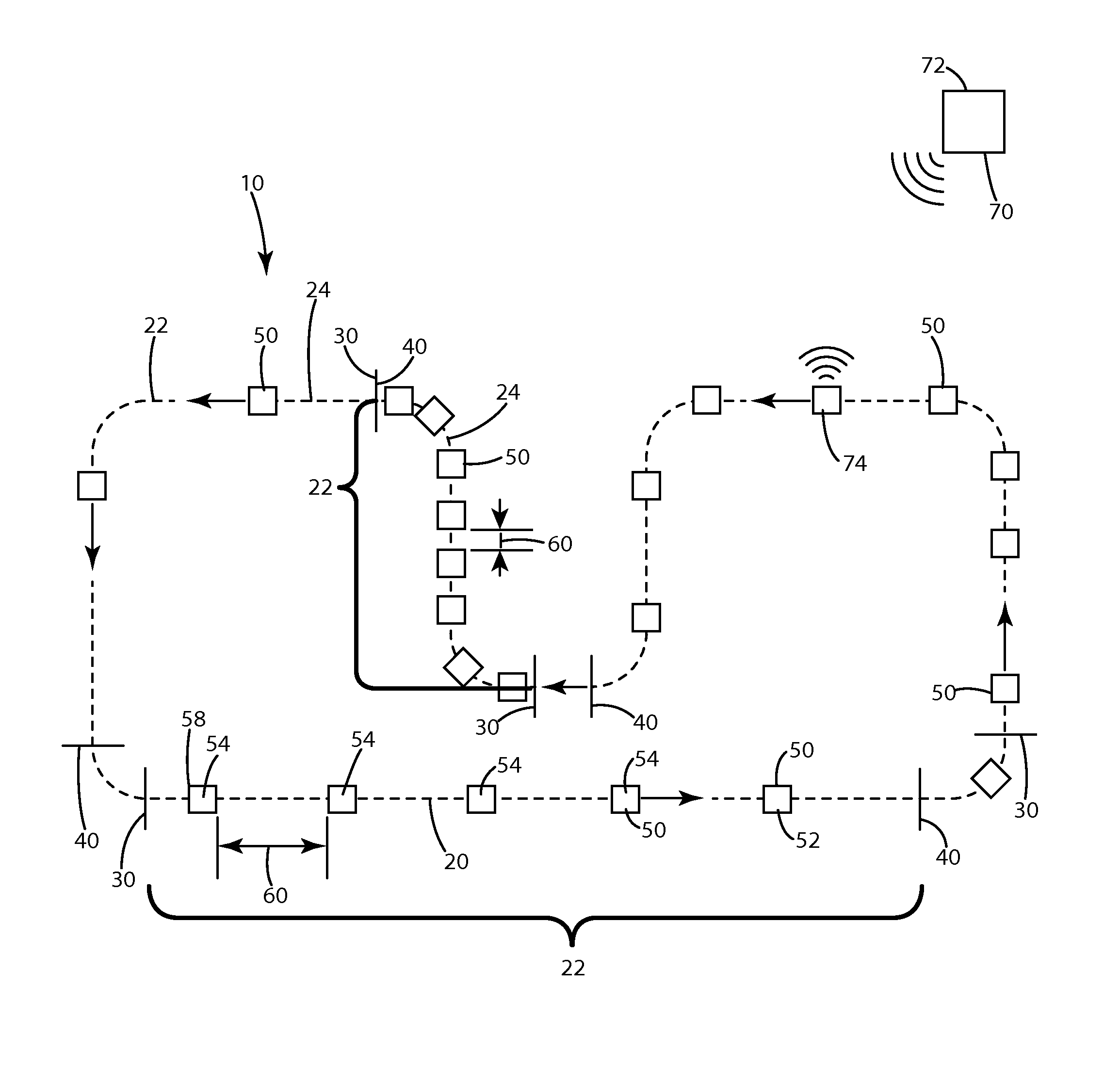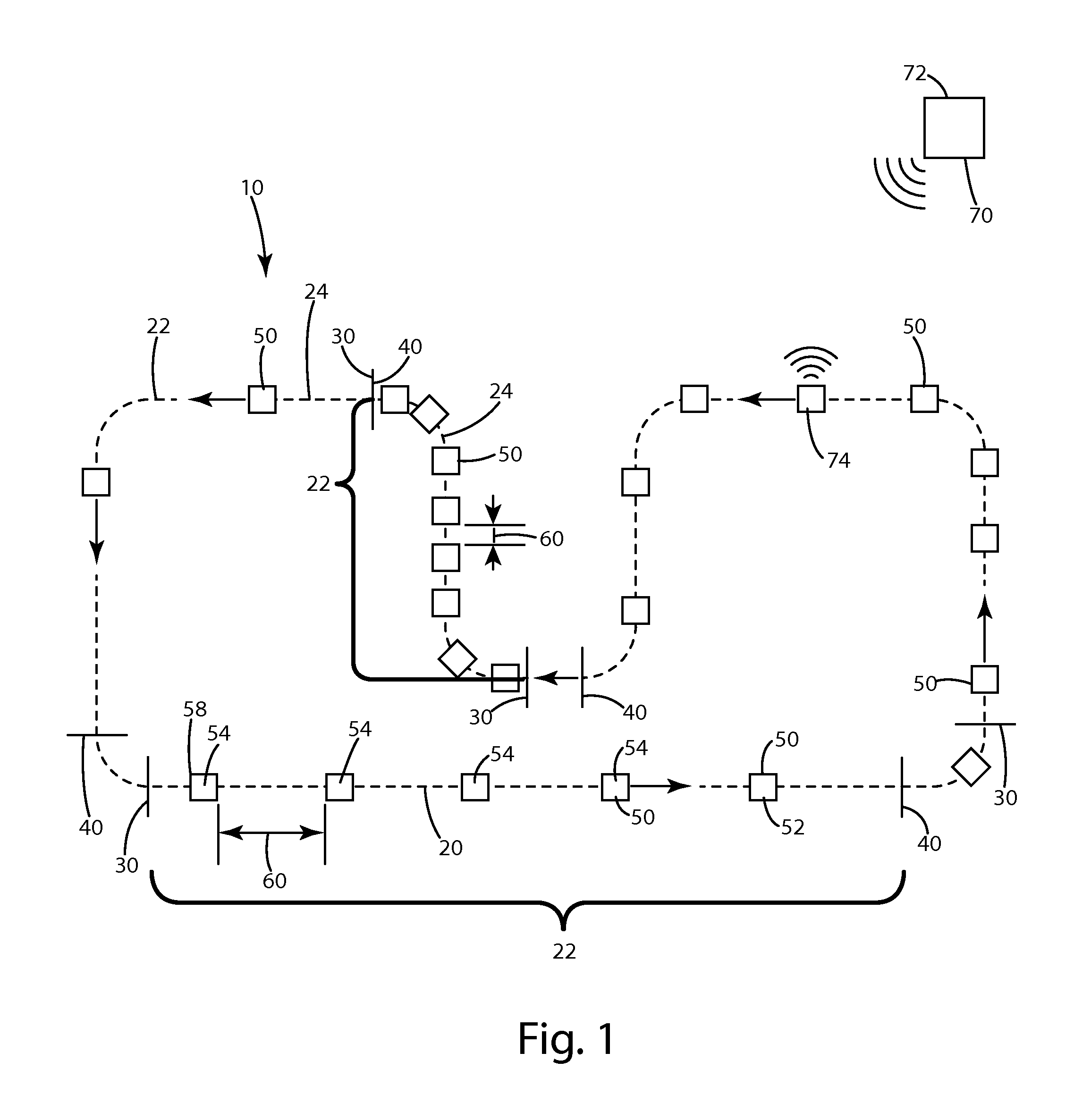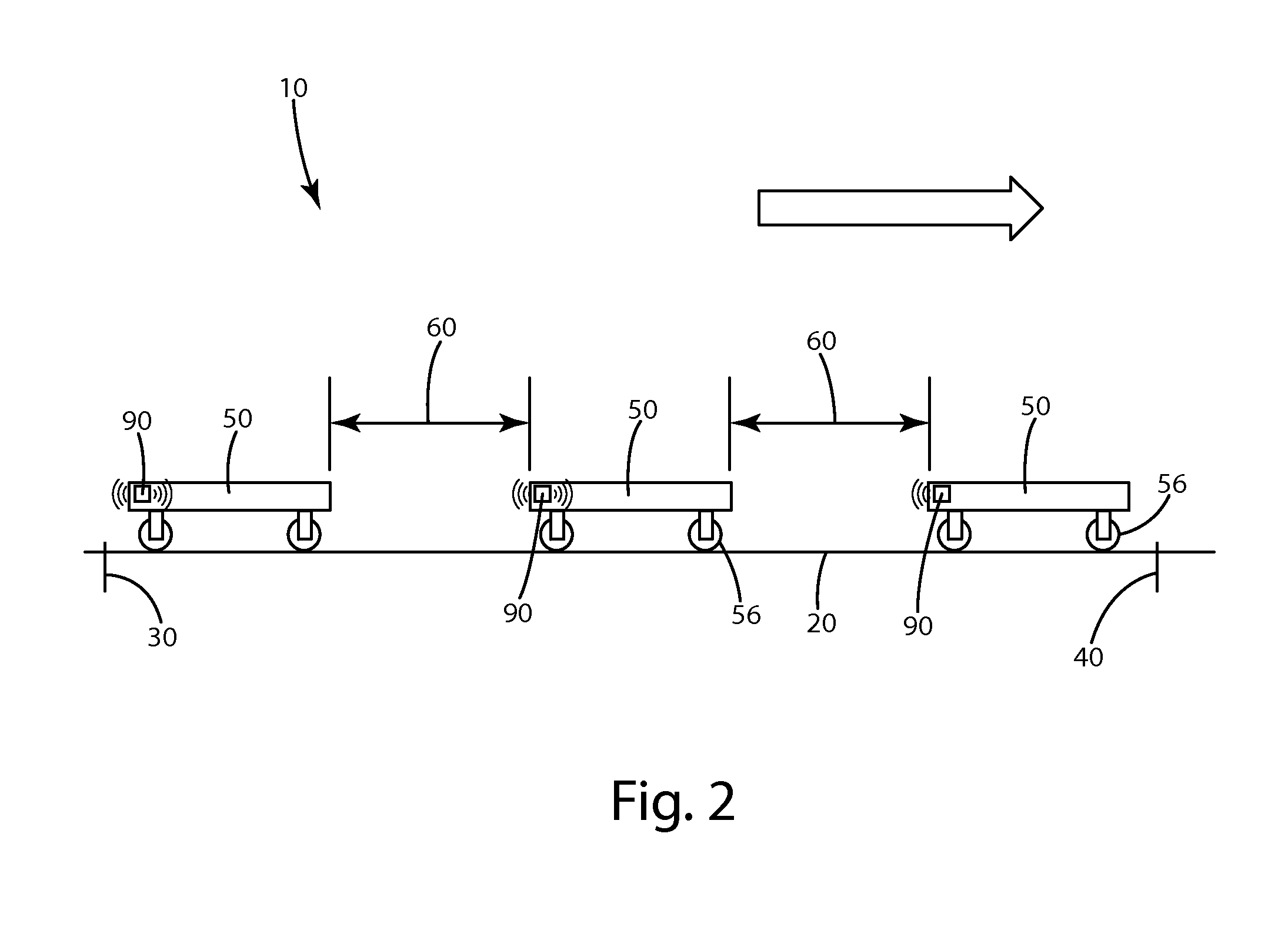Method of material handling with automatic guided vehicles
a technology of automatic guided vehicles and material handling, applied in the field of material handling vehicles, can solve the problems of preventing workers from crossing the conveyor path easily and safely, requiring high initial installation costs, and lack of flexibility for reconfiguration, so as to achieve the effect of clear distance traveled from memory
- Summary
- Abstract
- Description
- Claims
- Application Information
AI Technical Summary
Benefits of technology
Problems solved by technology
Method used
Image
Examples
Embodiment Construction
[0024]The present invention is generally directed to material handling vehicles and more particularly to a system and method of automatic guided vehicles that are capable of providing synchronized travel along a path such that regular manufacturing operations may be performed to material or workpieces on such automatic guided vehicles without the need for traditional conveyor systems.
[0025]The system 10, as illustrated in FIGS. 1 and 2, generally includes a travel path 20 having individual line segments or portions 22 bound by an initial line 30 and an end line 40. As an automatic guided vehicle (AGV) 50 travels along the path 20 within the line segment 22, each AGV 50 maintains a separation distance 60 from adjacent AGVs. With any given line segment 22 with at least two AGVs, there is a lead AGV 52, a subsequent AGV 54 and a last AGV 58. Of course, in some instances the subsequent AGV 54 and last AGV 58 may be the same. The system 10 may include a central controller 70 having a com...
PUM
 Login to View More
Login to View More Abstract
Description
Claims
Application Information
 Login to View More
Login to View More - R&D
- Intellectual Property
- Life Sciences
- Materials
- Tech Scout
- Unparalleled Data Quality
- Higher Quality Content
- 60% Fewer Hallucinations
Browse by: Latest US Patents, China's latest patents, Technical Efficacy Thesaurus, Application Domain, Technology Topic, Popular Technical Reports.
© 2025 PatSnap. All rights reserved.Legal|Privacy policy|Modern Slavery Act Transparency Statement|Sitemap|About US| Contact US: help@patsnap.com



